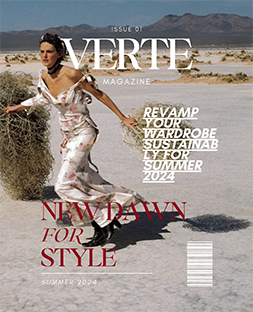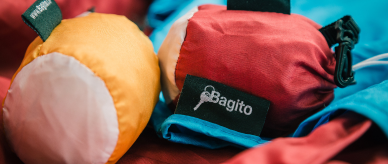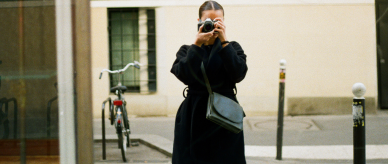It’s been a decade since I quit fast fashion. A decade of discovery, change, and personal growth that started with a simple realization: the clothes I wore were more than just fabric; they had stories, impacts, and consequences far beyond my closet. I wish I could say I was always aware of this, but like many, I stumbled into the world of fast fashion without fully understanding its true cost.
My Fast Fashion Journey
I used to love shopping. It was more than a pastime; it was a hobby, a form of therapy even. The satisfaction of owning something new seemed harmless. Little did I know, my love for fast fashion was contributing to a much larger, more complex problem.
When I first stepped into the fashion industry, I was thrilled by the glitz and glamor—the runway shows, the sleek designs, and the promise of endless creativity. It wasn't until I started working closely with designers, assisting in the launch of their collections, that I began to peel back the layers and truly understand the darker side of this world.
I found myself knee-deep in the intricate web of the fashion supply chain, from initial design concepts to production floors in garment centers. It was here, amidst the whirring machines and bustling workers, that I confronted the stark reality of fast fashion. I witnessed firsthand the grueling conditions endured by garment workers, often for minimal wages and in unsafe environments. Their toil, hidden behind the glossy façade of fashion magazines, struck a chord deep within me.
Beyond the human toll, I also became acutely aware of the environmental impact of our consumer-driven culture. Cheaply made clothing, churned out to satisfy our insatiable appetite for new trends, exacts a heavy toll on our planet. From chemical-laden dyes polluting waterways to mountains of discarded garments filling landfills, the true cost of fast fashion was laid bare before me.
These revelations were a wake-up call. They shattered the illusion of fashion as a harmless indulgence and forced me to confront the profound disconnect between my values and my actions. The allure of low prices and the thrill of acquiring new pieces no longer seemed worth the hidden costs I had witnessed. I realized that continuing down this path was not only unsustainable but also unethical.
In that pivotal moment, I knew I had to make a change. I could no longer passively contribute to an industry that perpetuated exploitation and environmental degradation. My journey away from fast fashion began with a commitment to educate myself and others about sustainable alternatives. It was a journey of discovery, exploring brands and practices that prioritize ethical production and environmental stewardship.
Quitting fast fashion wasn't just about changing my shopping habits; it was about aligning my actions with my values. It meant embracing a slower, more thoughtful approach to fashion—one that values quality over quantity, and mindful consumption over mindless accumulation.
This shift has not been without its challenges. Temptations abound, from flashy advertisements promising the latest trends at unbeatable prices to the convenience of online shopping with its endless array of options. But with each deliberate choice to support ethical brands or opt for secondhand treasures, I reaffirm my commitment to a more sustainable future.
My journey has taught me that change is possible, even in a world driven by fast-paced consumerism. By sharing my story and advocating for conscious consumerism, I hope to inspire others to join me on this path toward a fashion industry that values people and the planet as much as profit. Together, we can redefine what it means to be stylish and responsible, one mindful choice at a time.
Embracing Slow Fashion
I didn’t embark on this journey with a grand plan. It started with small steps—buying less, choosing quality over quantity, and exploring alternatives like secondhand shopping. I experimented with capsule wardrobes and challenged myself to a year of exclusively buying secondhand
Quitting fast fashion wasn’t just about reducing my environmental footprint; it was about reclaiming my identity through intentional choices. Each piece in my wardrobe began to reflect not just my style, but also my values. I discovered that investing in fewer, well-made garments not only saved me money in the long run but also brought a sense of satisfaction and pride in what I wore.
Overcoming Challenges
Transitioning to a more sustainable wardrobe wasn’t without its challenges. The accessibility and affordability of ethical fashion posed hurdles. Not everyone has the privilege to choose sustainable options that fit their style and budget. It required research, patience, and a willingness to explore alternatives like thrifting and DIY alterations.
Tips for Transitioning to Sustainable Style
If you’re feeling overwhelmed by the idea of quitting fast fashion, I understand. It’s a journey that requires effort and commitment. Here are some practical tips to get started:
Start Small: Begin by evaluating what you already own and decluttering mindfully.
Transitioning to sustainable fashion doesn’t have to mean throwing out everything you own. Start by assessing your current wardrobe and identifying pieces that align with your new values. Donate or responsibly dispose of items that no longer serve you, and prioritize versatile, timeless pieces that can be easily mixed and matched.
Educate Yourself: Learn about the impact of fast fashion through documentaries and articles.
Understanding the true cost of fast fashion is essential to making informed decisions. Documentaries like "The True Cost" and "RiverBlue" shed light on the social, environmental, and economic impacts of the fashion industry. Follow credible sources and organizations dedicated to sustainable fashion to stay updated on industry practices and trends.
Shop Secondhand: Explore thrift stores, online resale platforms, and clothing swaps.
Secondhand shopping is a sustainable and budget-friendly way to refresh your wardrobe. Thrift stores and online resale platforms offer a wide range of pre-loved clothing, often at a fraction of the original cost. Embrace the thrill of treasure hunting and discover unique pieces that reflect your personal style.
Support Ethical Brands: Look for certifications and transparency in brands’ supply chains.
When it comes to shopping for new clothing, making informed choices can have a significant impact. Prioritize brands that prioritize transparency and ethical practices in their operations. Look for certifications such as Fair Trade, Global Organic Textile Standard (GOTS), and B Corp certification, as these indicate a commitment to social responsibility and environmental stewardship.
It's crucial to dig deeper into brands' supply chains and labor practices to ensure they align with your values. At Verte Mode marketplace, we understand the importance of these criteria. We curate hundreds of high-quality, ethically sourced and made clothing options. Our team diligently verifies each brand against rigorous sustainability standards, using multiple data points and verification methods.
By supporting brands that uphold these standards, you not only contribute to a more sustainable fashion industry but also empower yourself as a conscious consumer. Every purchase becomes a vote for a better future, where ethical practices and environmental considerations are prioritized alongside style and quality. Together, we can make a meaningful difference in shaping a fashion industry that respects both people and the planet.
Quality Over Quantity: Invest in timeless pieces that are durable and versatile.
Building a sustainable wardrobe is about investing in quality over quantity. Choose well-made garments that stand the test of time in terms of both durability and style. Opt for classic silhouettes and neutral colors that can be easily mixed and matched, reducing the need for frequent replacements.
The Benefits of Quitting Fast Fashion
1. Discovering Personal Style
Breaking away from fast fashion allowed me to cultivate a style that felt authentic and timeless. Instead of chasing trends, I focused on pieces that resonated with my personality and could be worn season after season.
2. Building a Functional Wardrobe
A sustainable wardrobe isn’t just about aesthetics; it’s about functionality. By curating a collection of high-quality essentials, I created a wardrobe that works seamlessly together, reducing the stress of decision-making and maximizing utility.
3. Saving Money in the Long Run
Contrary to popular belief, sustainable fashion doesn’t have to break the bank. While ethical pieces may come with a higher price tag upfront, their longevity and quality ensure a lower cost per wear over time. Investing in durable clothing means fewer replacements and less overall spending.
4. Aligning with Personal Values
More than just a fashion choice, embracing slow fashion aligns with my values of social responsibility and environmental stewardship. It feels empowering to know that my clothing choices support fair labor practices and minimize environmental impact.
5. Fostering Creativity and Connection
Quitting fast fashion opened doors to creativity and community. Experimenting with secondhand finds and DIY projects sparked my creativity, while connecting with like-minded individuals who shared my passion for sustainable living enriched my journey.
Overcoming Challenges: The Realities of Sustainable Fashion
Transitioning to a sustainable wardrobe isn’t always straightforward. It requires navigating through challenges such as:
- Accessibility: Finding sustainable options that are affordable and accessible can be challenging, especially in certain regions or for specific clothing items.
- Affordability: Balancing budget constraints with the desire to invest in ethical fashion can require careful planning and prioritization of purchases.
- Education: Learning about supply chains, certifications, and ethical standards in the fashion industry is an ongoing process that requires dedication to staying informed.
- Mindset Shift: Overcoming the urge to constantly shop and keeping up with trends can be a personal challenge, requiring mindfulness and intentionality in consumer behavior.
The Impact of Fast Fashion on Individuals and the Planet
The allure of fast fashion lies in its affordability and accessibility, but the hidden costs are staggering. From exploitation of garment workers to environmental degradation, the fashion industry’s impact is far-reaching:
- Human Rights: Garment workers often endure unsafe working conditions, long hours, and unfair wages, particularly in countries where labor laws are lax and workers’ rights are not adequately protected.
- Environmental Impact: Fast fashion contributes to pollution, water scarcity, and waste accumulation. The production of synthetic fibers, chemical dyes, and textile waste poses significant environmental challenges.
- Consumer Behavior: The culture of disposability encourages overconsumption and contributes to textile waste, as trends cycle rapidly and clothing is discarded after only a few uses.
Beyond the Wardrobe: Embracing a Sustainable Lifestyle
Quitting fast fashion is more than just changing what we wear—it’s a step towards embracing a holistic approach to sustainable living. It’s about making conscious choices in every aspect of our lives:
- Minimalism: Embracing a minimalist mindset by prioritizing quality over quantity and decluttering our lives of unnecessary possessions.
- Circular Economy: Supporting initiatives that promote recycling, upcycling, and circular fashion, which minimize waste and extend the lifecycle of clothing.
- Consumer Advocacy: Holding brands accountable for ethical practices and transparency in their supply chains, advocating for fair labor conditions and environmental sustainability.
- Community Engagement: Engaging with local communities and organizations that promote sustainable fashion, sharing resources, and inspiring others to join the movement.
As I reflect on my journey from fast fashion to conscious style, I am reminded of the power we hold as consumers. Each purchase we make is a vote for the kind of world we want to live in—a world where fashion is not only stylish but also ethical and sustainable.
I invite you to join me on this journey. Whether you’re just beginning to explore sustainable fashion or you’ve been on this path for years, your choices matter. Together, we can create a future where fashion respects people and the planet.
Breaking up with fast fashion isn’t just a personal choice; it’s a statement against a culture of overconsumption and exploitation. It’s about reclaiming our power as consumers to demand transparency, ethical practices, and sustainability from the fashion industry.
As I continue on this journey, I invite you to join me. Let’s make every garment count—for ourselves, for others, and for the planet we call home.














